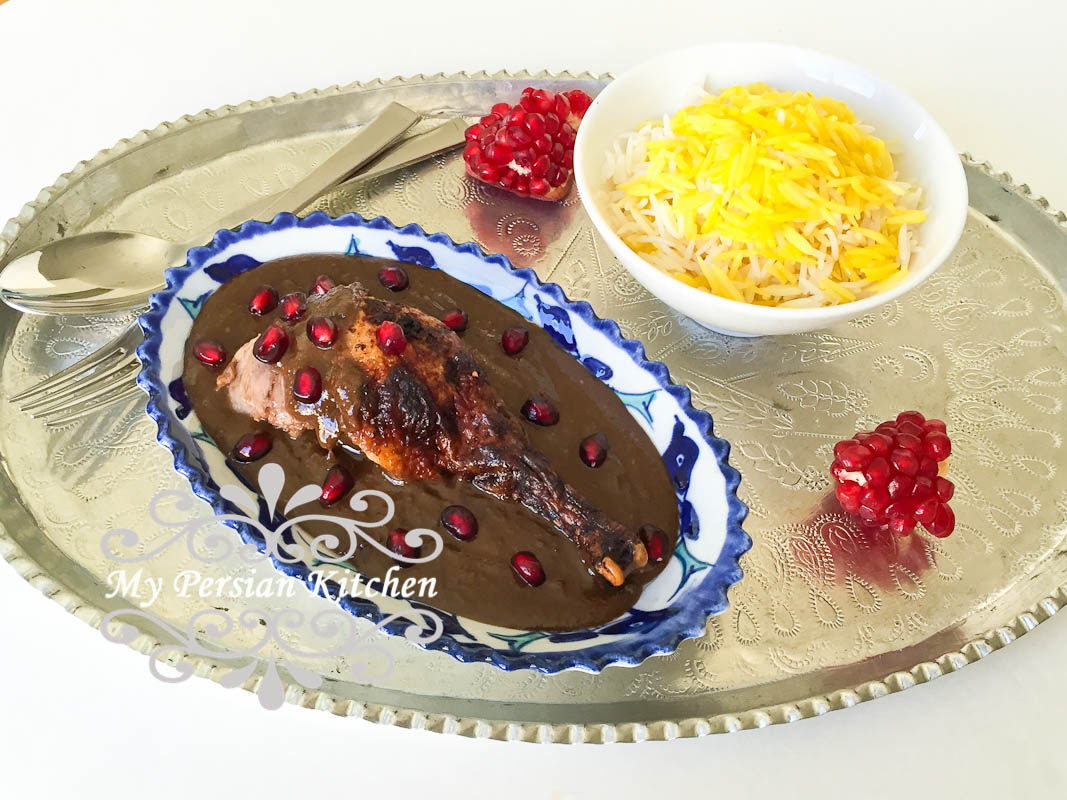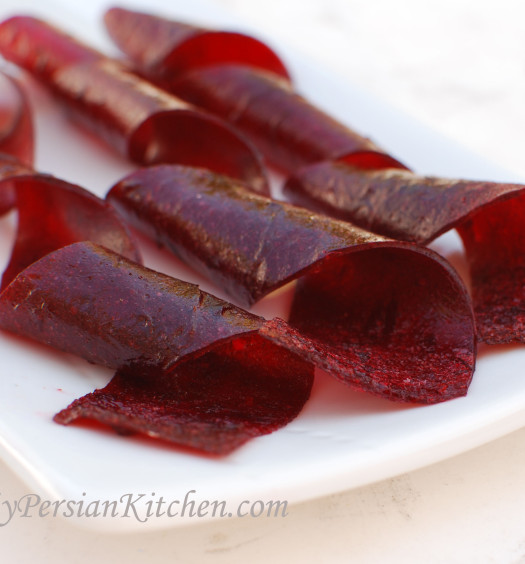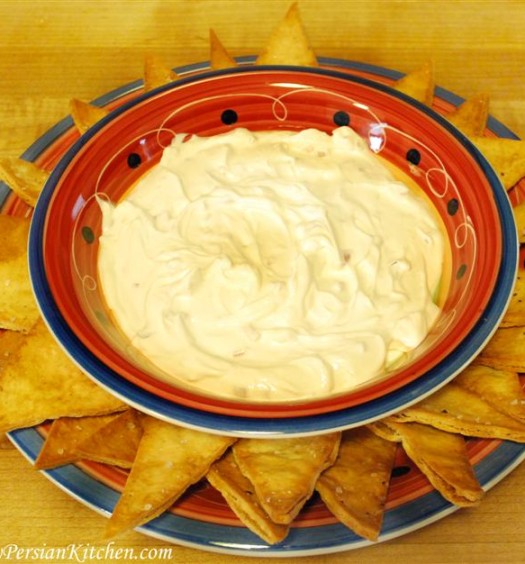When I was first gifted Najmieh Batmanglij’s New Food of Life cookbook I remember eagerly leafing through it and admiring all the pictures of her recipes. One picture in particular, her Fesenjan with Duck, caught my eye because I had never seen that combination before. I knew that someday I was going to learn how to cook duck on my own and serve it with Fesenjan.
During this time of the year it’s easier to find duck at regular grocery stores. In fact, I purchased mine from my local Ralph’s for $2.99 per pound, which I thought it was pretty reasonable.
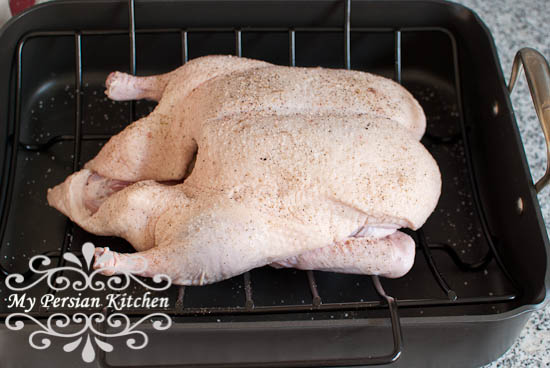
Wash and pat dry duck, then place on a roasting rack. With a sharp fork prick duck’s skin all over making sure that you don’t go all the way down to the actual meat, but simply down to the fat under the skin. Â Generously season and inside and outside of the bird with salt and pepper.
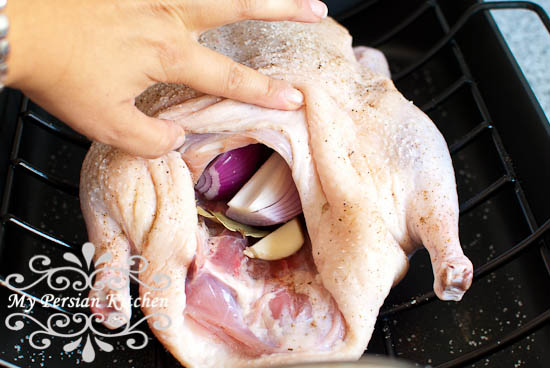
Add onion, garlic, and bay leaves to the cavity.  Roast at 375° for one hour.
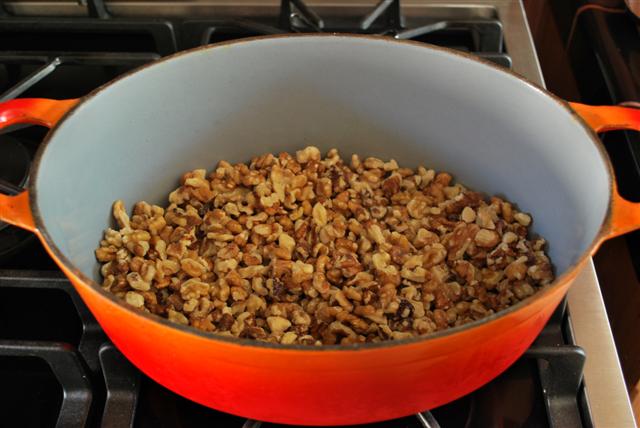
In the mean time, toast the walnuts. Make sure they don’t burn.
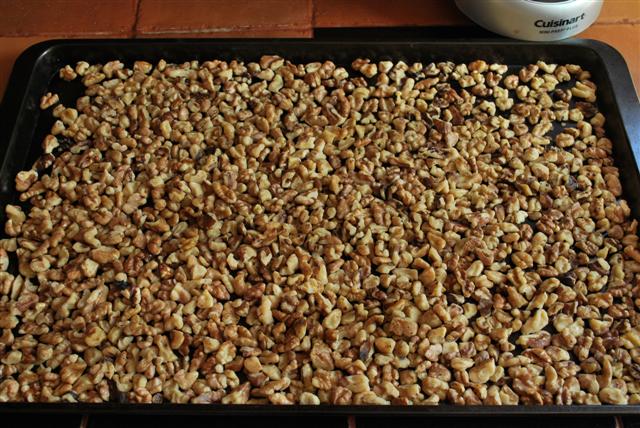 Then place them on a baking sheet and let them cool down.
Then place them on a baking sheet and let them cool down.
 Once they have reached room temperature, grind them all up.
Once they have reached room temperature, grind them all up.
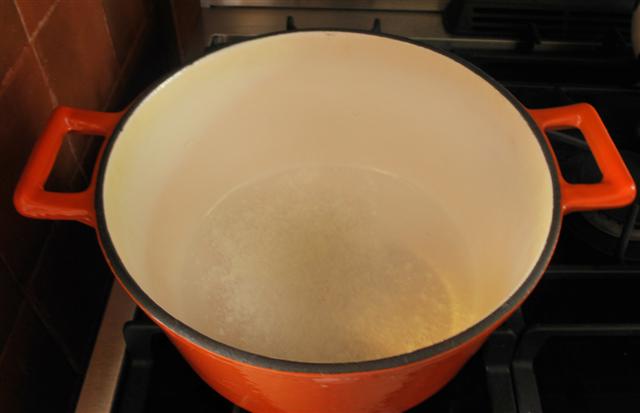 Warm up another pot and place 1 tbsp of flour. Toast the flour slightly.
Warm up another pot and place 1 tbsp of flour. Toast the flour slightly.
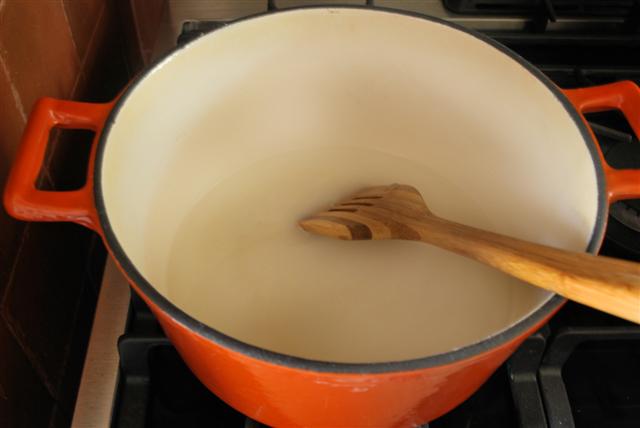 Add 2 cups of water and mix well until all lumps are gone.  found using a whisk during this stage was very helpful.
Add 2 cups of water and mix well until all lumps are gone.  found using a whisk during this stage was very helpful.
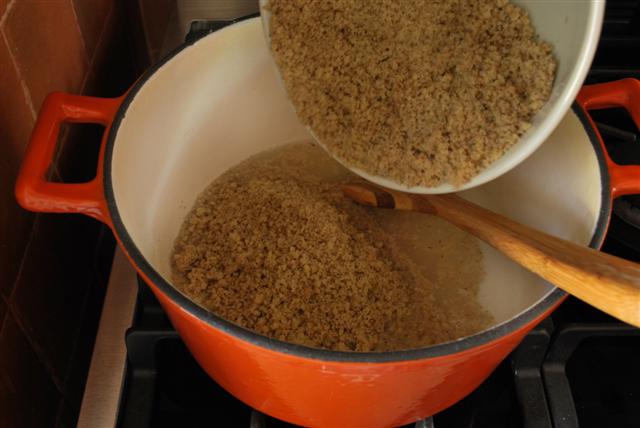 Add ground walnuts.
Add ground walnuts.

Stir until water and walnuts are thoroughly mixed. Cook on low.
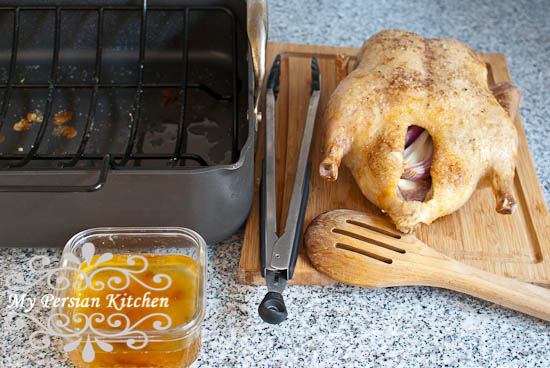
By this time, the duck should be half way done. Remove from the oven and drain the fat which has collected at the bottom of the pan. You can either discard the oil or use it for another recipe later. Place duck back in the oven and roast for another hour.

While the walnut mixture cooks, make sure you stay on top of it during this process. As the mixture thickens, it can easily burn. This process might take a little while. Once you see a layer of oil forming on top of the walnuts the hard work is pretty much done. You can actually see the oil rise through the bubbles.
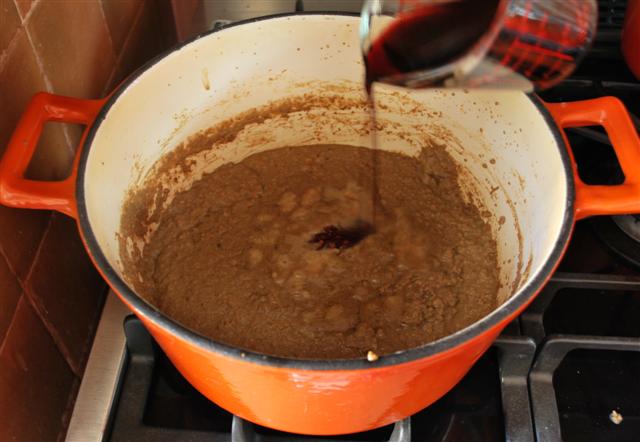
Add pomegranate paste and mix well. Season with salt and continue simmer on low for 30 minutes longer. If the stew is too sour, you do have the option of adding sugar to balance it out. Personally, I love my Fesenjan sour.
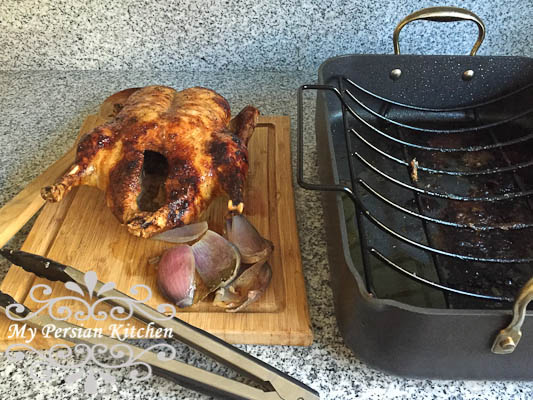
The duck is ready when the internal temperature reaches 170°. Remove aromatics from the belly. Then carve the duck and place in the stew.
Serve over Persian Rice.
- 5 to 6 lb whole duck
- 1 onion
- 4 cloves garlic
- 2 large bay leaves
- 4 cups walnuts
- 1 cup pomegranate juice
- 1 tbsp flour
- salt & pepper
- Wash and pat dry duck, then place on a roasting rack. With a sharp fork prick duck's skin all over making sure that you don't go all the way down to the actual meat, but simply down to the fat under the skin. Generously season and inside and outside of the bird with salt and pepper.
- Add onion, garlic, and bay leaves to the cavity. Roast at 375° for one hour.
- In the mean time, toast the walnuts. Make sure they don't burn.
- Then place them on a baking sheet and let them cool down.
- Once they have reached room temperature, grind them all up.
- Warm up another pot and place 1 tbsp of flour. Toast the flour slightly.
- Add 2 cups of water and mix well until all lumps are gone. I found using a whisk during this stage was very helpful.
- Add ground walnuts.
- Stir until water and walnuts are thoroughly mixed. Cook on low.
- By this time, the duck should be half way done. Remove from the oven and drain the fat which has collected at the bottom of the pan. You can either discard the oil or use it for another recipe later. Please duck back in the oven and roast for another hour.
- While the walnut mixture cooks, make sure you stay on top of it during this process. As the mixture thickens, it can easily burn. This process might take a little while. Once you see a layer of oil forming on top of the walnuts the hard work is pretty much done. You can actually see the oil rise through the bubbles.
- The duck is ready when the internal temperature reaches 170°. Remove aromatics from the belly. Then carve the duck and place in the stew.
- Serve over Persian Rice.
** Depending on which brand of Pomegranate Paste you use, the color of the stew may vary from a deep burgundy to brown. I have noticed that Sadaf’s Pomegranate paste is not dense, but slightly on the liquid side. Add a little more until the color adjusts to a deep burgundy. If the result is too tart, add more sugar.
Recipes from Pomegranate Week 2014
Pomegranate Jelly
Pomegranate Cheesecake
Zeytoon Parvardeh ~ Persian Pomegranate, Olive, & Walnut Dip
Recipes from Pomegranate Week 2013
Pom & Rum, A Cocktail
Butternut Squash & Pomegranate Salad
Lavashak Anar ~ Pomegranate Fruit Roll
Recipes from Pomegranate Week 2012
Eggplant With Pomegranate & Mint Dressing
Vegetarian/Vegan/Gluten Free Pomegranate Soup
Cucumber & Pomegranate Salad
Recipes from Pomegranate Week 2011
Pomegranate Ice-Cream
Potatoes with Pomegranate
Pomegranate Jello
Recipes from Pomegranate Week 2010
POM Wonderful Dinner Party ~ Persian Ruby
How to Open & Seed a Pomegranate
Rice with Pistachios & Pomegranate Arils
Pomegranate & Lime Glazed Cornish Hens
Pomegranate Granita
Recipes from Pomegranate Week 2009
Persians’ Love Affair with Pomegranate
Pomegranate Juice
Khoresht Fesenjan ~ Persian Pomegranate & Walnut Stew

